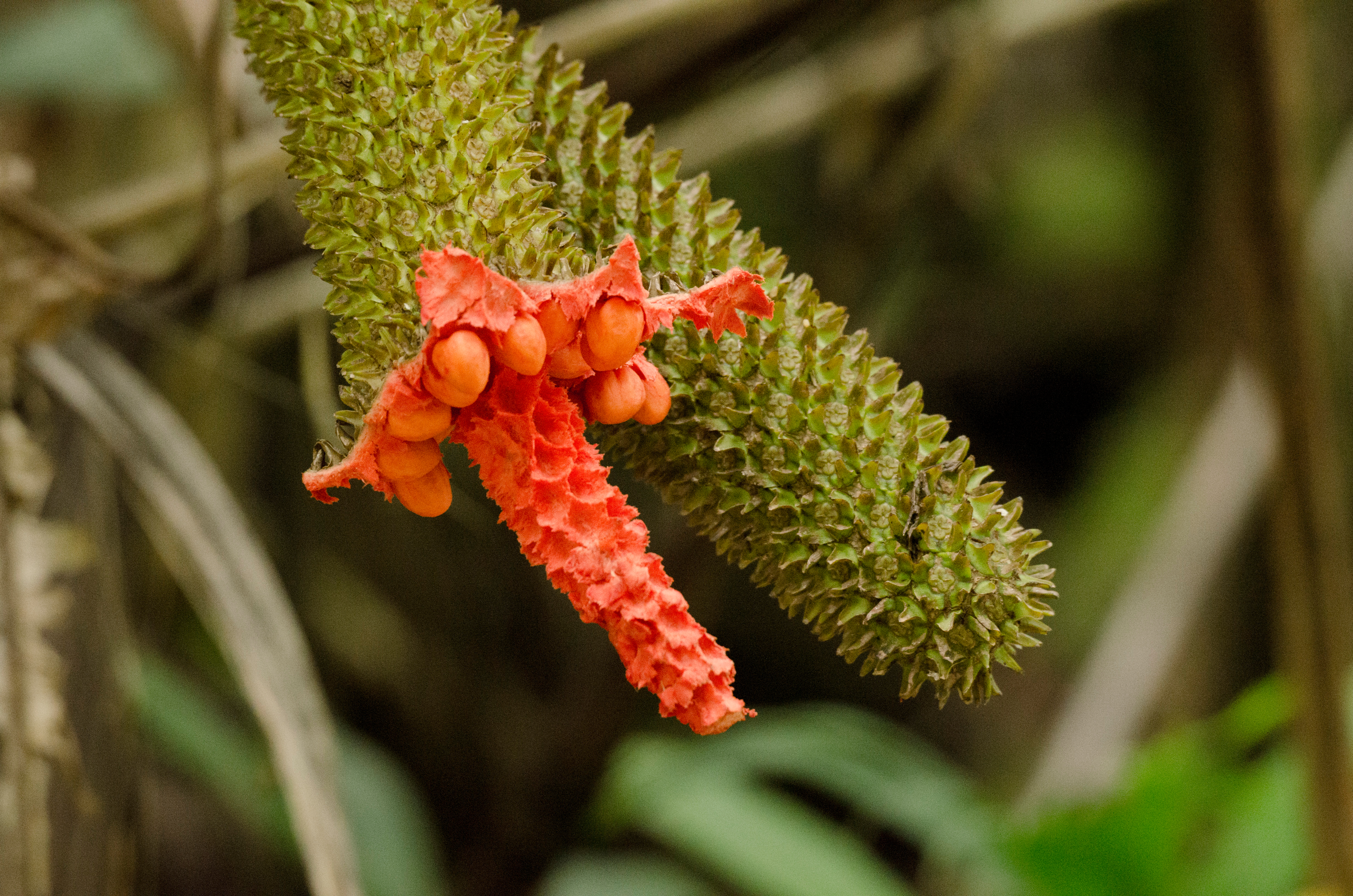Carludovica drudei
(Carludovica drudei)

Description
Carludovica drudei is a plant species fromthe Cyclanthaceae family. It grows as a tall perennial, herbaceous plant and is native to Central America and northwestern South America. Carludovica drudei is a strong, herbaceous plant up to about 3 m tall with a short subterranean shoot axis. The basal, helical, palm-like leaves are stalked 1.5-2 m long. The fan-shaped leaf blade is about a meter in diameter and about as wide as long or slightly wider. It is deeply divided into three to four wedge-shaped, longitudinally folded sections in the form of a hand. These are regularly slashed in front into narrow, pointed, 7-15 cm long sections or irregularly divided even deeper. A pair of small callus-like thickenings are present or absent at the base of the blade. The sex distribution is monoecious, separated sexes (monoecious). The bulbous inflorescences are stalked 40-50 cm long. When flowering, they are white, narrowly cylindrical, 11-12 cm long and about 1.5 cm thick. Immediately below the inflorescence are four, more rarely three, sheath -like bracts that envelop the bulb before flowering and then fall off. The small, radially symmetrical flowers are arranged in regular groups on the spadix, with a sessile female flower always surrounded by four short-stalked male flowers that are not fused together. The male flowers possess a perianth that gradually narrows into the short pedicel and a multi-dentate, cup-shaped perianth. The inconspicuous tepals have a resin gland on the outside. The numerous stamens are fused together with their stamens at the base. The basifixen, i.e. the anthers attached to the stamen at their base, consist of two theca, which open lengthwise. The flowers wither after blooming and fall off. From the inflorescence, a 15 to 26 cm long and 2 to 4 cm wide flask-shaped fruit cluster forms, on which the 5 to 6 mm long green bracts of the female flowers sit on the outer shell. Inside is a red pulp in which the seeds are embedded. Carludovica drudei occurs in Central America in two areas, on the one hand in southern Mexico (Tabasco, Chiapas) and in Guatemala, on the other hand in Costa Rica and Panama. In Costa Rica it is mainly found on the Pacific incline. The species avoids dry forest areas, which probably explains the absence in Nicaragua and Honduras. Along the northwest coast of South America, the area stretches from northwestern Venezuela (Zulia) through northern and western Colombia to Ecuador.
Taxonomic tree:







